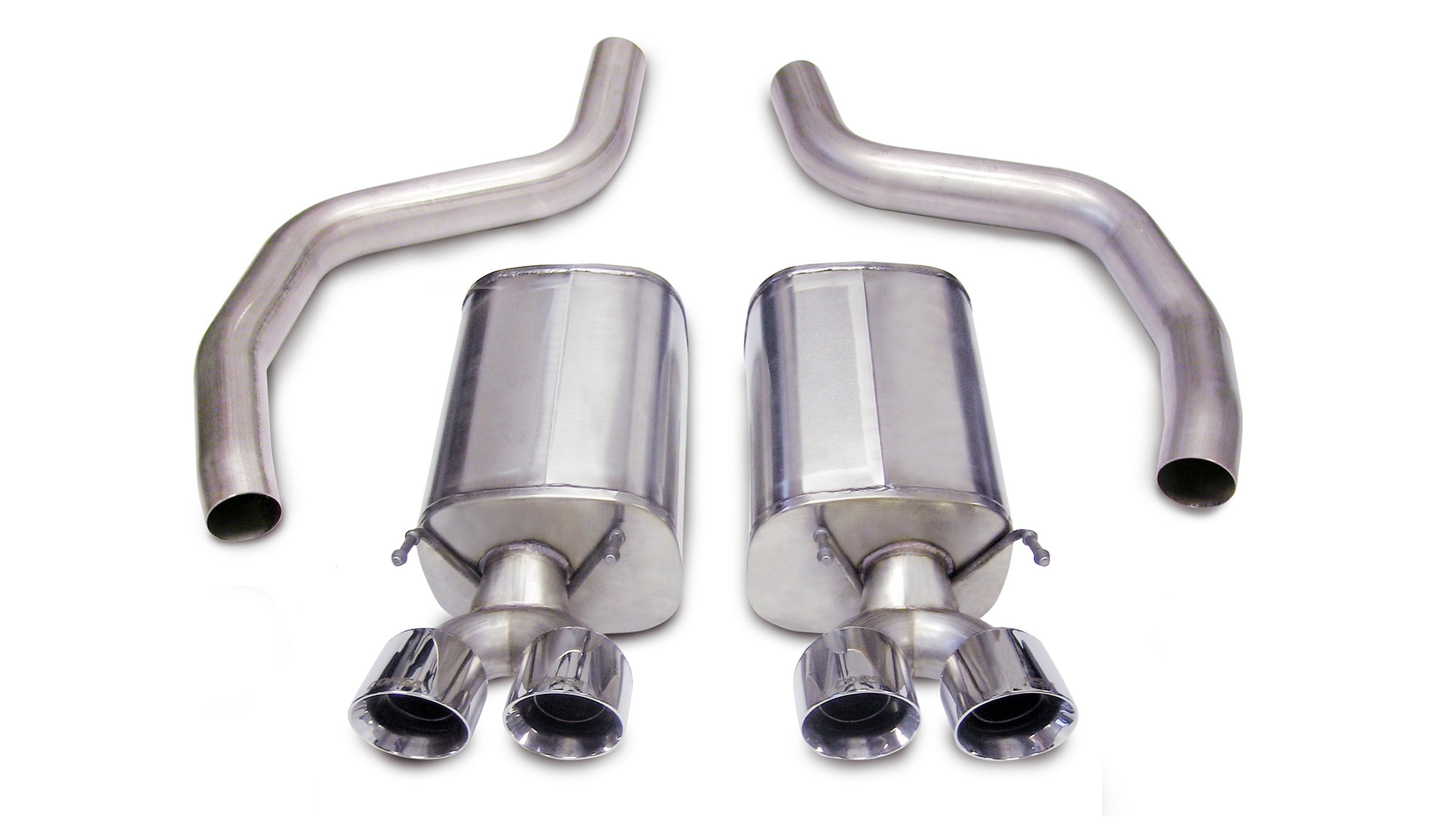Table of Contents
⚙️ What Is a Direct-Flow Exhaust?
A direct-flow (or “straight-through”) exhaust system replaces restrictive factory mufflers with a larger-diameter pipe and minimal bends. Instead of baffles, it uses perforated tubing and sound-absorbing materials to reduce backpressure, allowing exhaust gases to exit faster. While popular in motorsports, it’s a controversial upgrade for street cars.
✅ Pros of a Direct-Flow Exhaust
| Icon | Advantage | Details |
|---|---|---|
| 🏎️ | Increased Horsepower | Reduces backpressure, improving engine efficiency (5–15% power gain on tuned engines). |
| 🔧 | Durability | High-quality stainless steel or titanium resists corrosion better than stock systems. |
| 🎯 | Performance Tuning | Essential for turbocharged engines or track builds needing optimal exhaust flow. |
| 🔊 | Aggressive Sound | Delivers a deep, sporty exhaust note (ideal for enthusiasts). |
❌ Cons of a Direct-Flow Exhaust
| Icon | Drawback | Details |
|---|---|---|
| 📢 | Excessive Noise | Illegal in many regions (e.g., EU noise limits: 74 dB). Daily driving becomes fatiguing. |
| 🚫 | Legal Issues | Fails emissions tests (no catalytic converter). Fines or failed inspections in strict regions. |
| 💸 | High Cost | Custom builds cost 1,500–1,500–4,000+ (parts + labor). |
| 🛠️ | Complex Installation | Requires ECU remapping, header upgrades, and professional tuning. |
| ❄️ | Cold-Weather Challenges | Reduced ground clearance risks damage. Cold starts may lack backpressure, increasing wear. |
📊 Direct-Flow vs. Stock Exhaust
| Feature | Direct-Flow | Stock Exhaust |
|---|---|---|
| Noise Level | Loud (90–110 dB) | Quiet (70–80 dB) |
| Weight | Lighter (stainless/titanium) | Heavier (mild steel) |
| Emissions | Non-compliant (no cat) | Compliant (with catalyst) |
| Power Gain | 5–15% (tuned engines) | Minimal |
🔧 Installation Considerations
- Legal Compliance: Check local laws (e.g., U.S. EPA/CARB rules, EU noise/emissions standards).
- Vehicle Suitability: Best for turbocharged, high-performance, or track cars—not daily drivers.
- Professional Tuning: Mandatory ECU adjustments to avoid lean conditions or engine damage.
- Material Choice: Opt for 304 stainless steel or titanium for longevity.
🌟 Myth vs. Reality
- Myth: “Direct-flow exhausts always sound like race cars.”
- Reality: Properly tuned systems with resonators can muffle drone (e.g., Borla or MagnaFlow designs).
- Myth: “You’ll gain 50 HP instantly.”
- Reality: Gains depend on engine tuning—stock engines see minimal benefits.
❓ FAQ
Q: Can I pass emissions with a direct-flow exhaust?
A: No—most lack catalytic converters. Swap back to stock for inspections.
Q: Is a direct-flow exhaust legal for street use?
A: Depends on your region:
Illegal: California, EU countries, Australia.
Legal: Some U.S. states (no emissions testing).
Q: Does it improve fuel economy?
A: Rarely. Aggressive driving with louder exhaust often reduces MPG.
💡 Who Should Install a Direct-Flow Exhaust?
- Track/Race Cars: Maximize performance and airflow.
- Show Cars: Aesthetic and sound enhancement.
- Turbo Builds: Reduce backpressure for turbo spool efficiency.
⚠️ Final Notes
- Consult a tuner: Ensure compatibility with your engine.
- Prioritize quality: Cheap kits drone excessively and corrode quickly.
- Consider alternatives: High-flow catalytic converters or valved exhausts offer a middle ground.
Expand Your Automotive Knowledge 📝
Explore 500+ Free Expert-Curated Guides
🚗 Learn New Skills
From basic maintenance to advanced repairs — clear, actionable tutorials for every skill level.
🌍 Access Anywhere
Mobile-friendly guides with HD visuals. No downloads required.
- Guides & Tutorials
- Car Maintenance 101
- Diagnostics & Troubleshooting
- Seasonal Maintenance
- Budget-Friendly Repairs
- Electrical Systems Guide
- Car Safety & Reliability
- Tools & Product Reviews
- Routine Maintenance
- Car Modifications & Upgrades
- Buying/Selling Guides
- Eco-Friendly Car Care
- Advanced Repairs
- Car Laws & Compliance
- Emergency Repairs
- Future Car Tech


